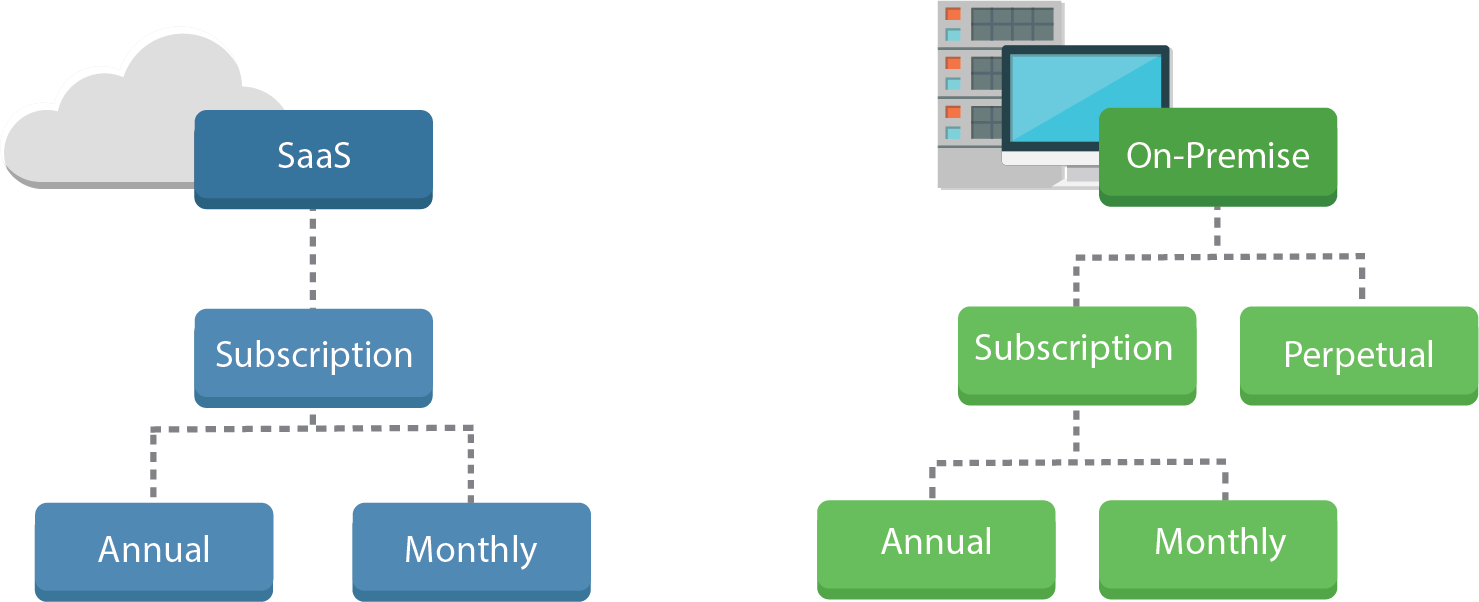42Gears Licensing Policies – SaaS vs On-Premise Implementation
Fév 03, 2017 | 42Gears Team
SaaS Based License
SaaS is the short form for ‘Software as a Service’. It is delivered to a third party via a browser or a cloud-based server. This service is sold to a customer as subscriptions. A subscription license allows the buyer to use a software application for a licensed term period. At the end of the subscription period, the user has the choice to renew the license. On no renewal, the product will no longer be licensed, and no services will be provided. 42Gears offers a SaaS-based subscription model where we use our own cloud infrastructure. The customer has an option to decide on the timeline of the policy depending on how long they want to use the software.
 On-Premise License
On-Premise License
An On-Premise subscription license is the preferred option for customers who usually wish to integrate the software into their own servers and manage security and do the administration of the server. 42Gears On-Premise model is available as a subscription or a perpetual license. While the subscription license is only valid for a limited term, a perpetual license is owned indefinitely. Once bought, the buyer of a perpetual license has the right to use a particular version of software or service forever. In most cases, buyers opt for a maintenance plan to receive the latest software version and technical support post the first year of purchase.
Timelines
42Gears subscription licensing model is available on a monthly and annual basis. The monthly model will require the company to renew the license every month to continue using the software and support. On the other hand, the annual license has to be renewed only once every year to continue using the software and receive support.
42Gears perpetual licensing model comes with a software support that is valid for only 1 year. From the 2nd year onwards, the customer will be charged 30% percent of the license cost for support maintenance.
Users can enjoy easy license management with 42Gears Activation Console.
42Gears Licensing – Subscription vs Perpetual
The biggest benefit of a subscription licensing plan is the low up-front cost compared to a heavy sum demanded by a perpetual license. A lower price point for a subscription license would allow customers to purchase additional licenses subsequently as the company grows, without eating into its cash flow. They are also more flexible and can be scaled as per the company’s requirement. A subscription model allows the company to simply discontinue using the software when it is no longer needed and re-purchase it when required. Companies running on investment capital usually prefer to opt for a subscription model to avoid a major dip in their cash flow.
The idea why people opt for a perpetual license is because they prefer to own rather than rent. Though to own a perpetual license, the buyer would be required to make a larger upfront payment, its long-term benefits makes purchasing the permanent license a better option for many. There are two major reasons why a perpetual license is considered beneficial – it costs less in the long run and secondly, it offers the security of owning the software. The second benefit of a perpetual license will come in handy in case of market downfall, giving the option to discontinue paying for the maintenance plan while continuing to use the software to ensure smooth business operations.
Before making a choice between a subscription license and perpetual license model, customers usually compare the subscription cost of the software with the up-front license cost along with the yearly maintenance and support price for permanent use. Most companies will usually see a breakeven point in a few years’ post-purchase when the perpetual license eventually becomes cheaper than the subscription model. The choice actually depends on the deployment plan and budget of the company.
Subscribe for our free newsletter


